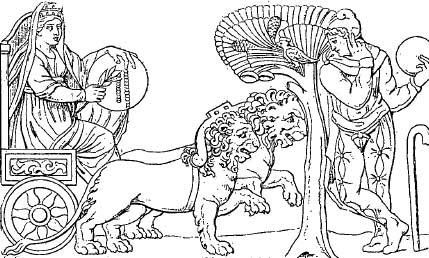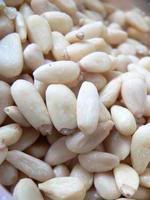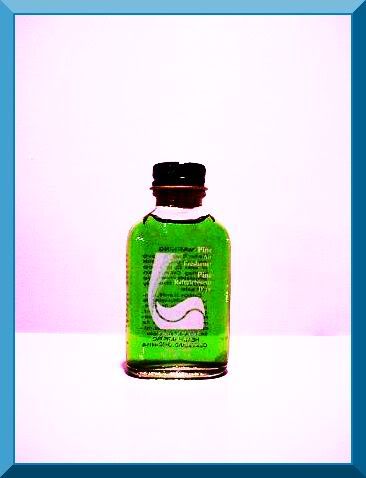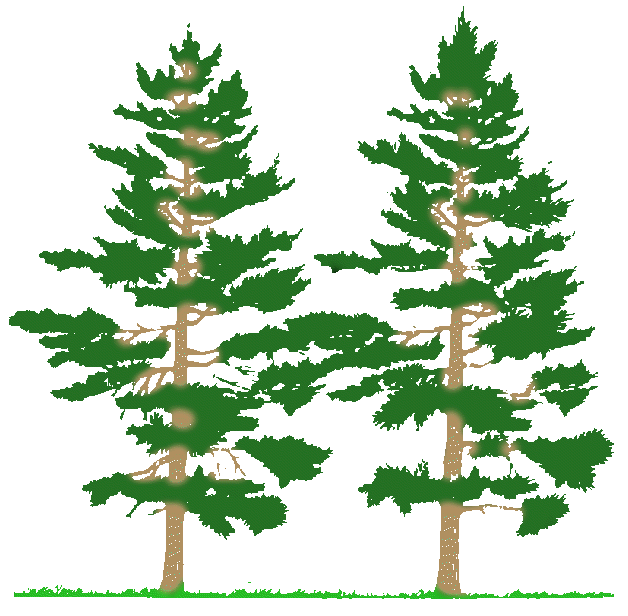
Synonyms:
Pine, [English], pinho [Portuguese], pino, piñon [Spanish], pino [Italian], pin, pignon [French], pijn, [Dutch], Kiefer [German], fyr [Danish, Norwegian], tall [Swedish], mänty [Finnish], sosna [Russian], bor, mura [Bulgarian], bora, molike [Serbo-Croatian], peuke, pitys [Greek], çam [Turkish], chir, kail [Hindi], thong [Vietnamese], Matsu [Japanese], song [Chinese]. Pinus cembra, edible kernels = Arve, Pinus edulis, = Pinion, P. sylvestris = Scotch Pine, Forest Pine, Norway Pine, etc.
Description:
The ancestors of our present day pines already colonized the earth during the Jurassic Age, 300 million years ago. Like Gingkos they belong to the gymnosperm division, which comprises the oldest type of seed-bearing plants on the planet. People often find conifers difficult to distinguish, as their appearance superficially is very similar. A characteristic mark of Pines is the arrangement of their needles, which always grow in bundles. The number of needles in each bunch varies according to the species. In their useful stage pines all tend to look the same, a pyramidal crown upon a feeble stick of a trunk. Later the crown often flattened out. The lower parts hardly ever show any branches.. The bark tends to be gray to reddish brown, becoming scaly, flaky and deeply fissured with age, though the stems of young trees and branches can be quite smooth. Pine trees, like other conifers, exude a pungent resin, especially where the bark has been injured. The resin is very sticky at first but soon dries into brittle tears. The fresh, sticky resin has a characteristic pineol fragrance, balsamic, yet 'clean' and fresh.
Note: Depending on one's taxonomic point of view the genus pinus comprises between 90 and 120 species. They are treated generally here with references being made to specific species where appropriate.
Habitat & Ecology:
Pines grow abundantly throughout the northern hemisphere. They occur from Scandinavia, Canada and Alaska and as far south as northern Africa, Sumatra and China, but here they are restricted to the mountainous regions. Pines are very hardy and adaptive. Almost no environment is too hostile for them. They find hollows and cracks in the most unlikely places and seemingly defy all the odds by clinging to impossible rocks. The greatest diversity of species occurs in Mexico, Southern United States and also in China. However, the better-known species originate in the northern parts of central Eurasia where they grow profusely.

Pines naturally grow in harsh and difficult environments, often acting as pioneer species that make the ground more hospitable and act as protectors for other, more sensitive species. In their natural habitat they rarely crowd each other, leaving plenty of gaps for sunlight to penetrate the spaces between one tree and the next, thus ensuring a healthy and varied undergrowth development. Pines grow fast and have a light wood and very straight stems which have made them popular as a commercial timber species. Logged areas can re-grow at a relatively fast speed if they are not entirely clear-cut. However, commercial logging companies are often too greedy to give nature time to regenerate. Instead, monocultural plantations are planted in straight rows over vast areas of land, for easy harvesting. Such plantations are biologically dead. The dense growth does not allow for any understorey growth to develop, as no sunlight penetrates to the plantation floor, which, at any rate is usually covered with a dense layer of acidifying needles that make it even more difficult for other species to take a hold. There are no birds or small animals in this kind of 'dead' zone and the atmosphere is the exact opposite to that of a natural pine forest. Where the latter is lofty, serene and inspirational, the plantation is oppressive, forbidding, sad and gloomy.

HISTORY, MYTHOLOGY AND FOLKLORE:
Familiarity breeds contempt. So common are Pines that we hardly pay any attention to them at all, except, perhaps in recognizing them as a cheap and common timber species. Yet anyone who has ever hiked on a warm and sunny afternoon through a mountain forests populated with lofty pines, firs and spruces will agree that nothing compares to their fresh balsamic scent mingled with that of the soft forest floor beneath. Their resinous aroma permeates the air and each breath one takes is like sipping nectar, invigorating body and soul. It elevates the spirit, clears the mind and makes the feet move lightly along the path. With their crowns waving gently high in the sky above, they exude an air of loftiness and serenity and spread a sense of inner peace, tranquility and calm. They embody the essence of resilience and determination, the arboreal image of 'mind above matter'. Growing among rocks and stones where there is almost no soil, beaten by winds and weather, they inspire us to rise above difficulties and persist against the odds. They also show us how: the way to success is inner peace, calmness, serenity - and letting ones spirit rise to touch the sky. Those who are worn with fatigue and stress should make ample use of the refreshing and invigorating power of pines.
In folklore, Pines, Firs and Spruces are often treated as one and the same. They are indeed closely related and for most purposes can be used interchangeably. In mythology they are frequently associated with dwelling places of fairies and gnomes, and thought of as benevolent, refreshing places where tired walkers can safely rest in the protective aura of the tree. They symbolize humbleness, good fortune and prosperity , fertility and protection. Their needles stay green even through the harsh winter months, and thus their evergreen nature has been interpreted as a sign of their vitality. In the olden days, farmers sought to transfer this vital force and its protective powers to their barns and stables by sweeping them with brushes wound from Pine twigs and pinning some above the doors as well. They were thought to ward off witchcraft and protect house and cattle from misfortune, disease and even lightning. In Germany a modern practice echoes this belief. Once the foundations of a new building are laid, the raw structure is crowned with a decorated pine tree, to attract protection and prosperity.

Once upon a time, when winter supplies tended to be much sparser than they are nowadays, the nut-filled pine cones were a very welcome and important source of food. Perhaps the multitude of seeds inspired their association with fertility, prosperity and aphrodisiac powers. It was hoped that this property was transferred by means of sympathetic magic as cattle and children were lightly spanked with the twigs. The apparent life force of Evergreens was especially welcome in the depth of winter, when they alone hold the promise of life's continuity. Pine branches or logs (Yule logs) were decorated and brought into the house to provide light and warmth and to serve as a reminder of the immortal life force. The church tried to suppress such customs but eventually could not keep them at bay. The modern Christmas tree is a novel invention, only a few hundred years old but ties directly to previous pagan customs that celebrated the tree of life.
In ancient Roman mythology Pines were sacred to Attis, the lover of the earth goddess Cybele, who was gored by a boar. After his death he was changed into a Pine tree. At his festival, which was held at the spring equinox, a pine tree was cut and brought into the sanctuary of the goddess. The trunk was prepared like a corpse and decked out with flowers. Tied to it was an effigy of a young man, the image of Attis prior to his mishap. For two days the crowds lamented his death and on the third day of celebrations the priests would offer a blood sacrifice by cutting their own arms. The accompanying music was said to drive the crowds into a frenzy and several of the worshippers would offer blood sacrifices of their own, even to the point of imitating the emasculation of their God, by cutting off their own genitals. Blood and semen are the sacred fluids of life. By offering these to the Earth Goddess it was hoped that the life force (Attis) would be resurrected and thus the fertility of the Goddess restored.

Attis is identified with Adonis and other vegetation gods of the Mediterranean basin such as Tammuz, Dionysos and Osiris with whom he shares his fate and mysteries. His cult originates in Asia Minor but soon developed a widespread following throughout the region, even spreading to Greece and Rome. Similar rituals intended to restore the fertility of vegetation deities throughout the world frequently required a blood sacrifice as part of the grueling ceremony. The reason for this seems to be that these religious rites were essentially acts of sympathetic magic in which the worshippers imitated the course of nature. To grow corn it is first necessary to slay the corn-spirit (harvest), to break up his body and bury it in the life-restoring earth-womb. The spring rites of the resurrected life-force were nothing other than a ritual enactment of these mysteries of life. Later the actual sacrifice was substituted with symbolic offerings, much as the transmutation of Christs body into bread and wine at the catholic mass is now substituted with rice paper. Christ is but the latest incarnation of these ancient deities who signify the cycle of the life-force with its annual rhythm of life, death and resurrection each year at the Spring Equinox (Easter). There are numerous similarities between these ancient cults and the latest modern version, which gives indeed much cause to ponder. In fact, when the Spaniards first arrived in the New World and witnessed one such ceremony of the Aztecs they felt that the similarities between their own and this alien ceremony were so cunningly similar that the Aztecs must have devised it merely as a mockery of their own Christian ritual.
There are several suggestions to link the Attis/Dionysus figure to the pine tree. It seems the most obvious one is the evergreen, immortal nature of pine. In Lebanon the same rites were celebrated, but here the sacred tree was the cedar, as the local symbol of immortal life. Also, both cedars and pines bear phallus shaped cones and the multitude of edible Pine nuts provides further suggestive symbolic imagery. The sacred cedar/pine forests where the rites were celebrated were said to burst into flower at spring equinox, their forest floor being covered by red anemone (Adonis sp.), which were thought to spring directly from the blood spill of the hero/god. Although the Latin name for anemone is Adonis some people believe that the frenzied ritual was induced by fly agaric mushrooms, which would also grow among the pines and cedars, and with their red caps might also allude to the hero's blood. While it is entirely possible and indeed likely that some hallucinogenic substance might have been used in conjunction with these rites, there is not enough evidence to determine just what kind of substance was involved, for while fly agarics may be found among the pines it is another question whether it would make its appearance at Spring Equinox. However, in Greece Dionysus is the successor of Attis/Adonis and his rites were not just associated with ordinary drunkenness, but his wine thought to have been heavily 'fortified' with a variety of other ingredients.
Folk Medicine:
Pines, like other trees were much used in so called 'transfer magic', a folk magical healing rite intended to avert ones pains and transfer them to a tree or in some cases to birds that happened to be passing over the tree. The ritual usually involved scraping a small patch of bark off the tree and placing some token such as hair or fingernails in the hole while pleading solemnly with the tree's spirit to accept ones pains. In the case of pines this practice was mostly used to transfer gouty pains and warts.

On a more modern note, the edible pine kernel (pine nut pr pinon) gave its name to the 'pineal gland', which it resembles in size and appearance. According to eastern philosophies, the pineal gland is the seat of the soul. For a long time Western medicine was mystified by it, but now it seems clear that, though very small in size, the pineal gland plays an important role in regulating individual biorhythms, in itself a rather perplexing process.
Astrological Ruler: Mercury in Capricorn,
Element: Air
Associated Gods: Jupiter, Pan, Dionysus, Attis
Spiritual Properties: Inner peace, serenity, tranquility, rising above difficulties, resistance, vigor, determination, strength, rejuvenation - refreshing mind, body and spirit, purification, cleansing of sacred space and ritual objects, dispel negative energy, crystal cleansing, protection, fertility, birthing, inner strength, understanding, healing rituals, prosperity consciousness, manifestation
MEDICINAL USES
PARTS USED:
Needles, Inner Bark, Nuts, Resin
HARVEST TIMES:
Collect the needles on a warm and sunny spring day and dry with gentle heat. They can be kept for up to 1 yr, but protect against sunlight and store in an airtight container lest they lose their scent - and strength. Don't collect from the tops as otherwise you will stunt the tree's growth.
Kernels ripen late in the autumn in the second year. Depending on the species they can be hard to collect, either because the trees are too tall or the kernels are too small. Often the kernels drop while the cones remain on the tree. Squirrels and birds usually manage to be the most successful collectors. Only gather where there is plenty and leave plenty more than you take.
CONSTITUENTS:
Needles: high in vitamin C, sucrose
Inner Bark: Tannin, Quercetin, Phenol
Resin: Limonene, Essential Oil, Terpenes
Kernels - fatty oil
LEAVES/NEEDLES:
ACTIONS:
Externally: stimulant, anti-rheumatic, anti arthritic, antiseptic,
Internally: anti-scorbutic, anti-inflammatory, immunostimulant
INDICATIONS:
In Europe the needles are the most frequently employed part of the pine. They constitute a very old home remedy that has stood the test of time. They are especially useful for afflictions of the respiratory system, such as sore throat, hoarseness, persistent cough, catarrh and bronchitis.
An infusion can be prepared by adding 10 parts of hot water to 1 part of dried needles. Cover and steep for 5 minutes. Sweeten with honey. This brew is also useful for kidney and bladder afflictions.

Externally a strong decoction of the needles can be used as a bath additive, liniment for aching muscles, rheumatic pains and neuralgia or as a steam bath for respiratory conditions. The decoction is made by adding 4 handfuls of needles to 1 liter of water, bring to the boil and simmer gently for 15 min. Be sure to cover the pot, as the essential oil of pine is very volatile and likely to escape unless restrained. Strain and add to the bathwater. This is one of the most wonderful blessings of the plant devas to help us cope with our stressful modern lifestyles. It is soothing and refreshing, stimulating yet relaxing. Especially recommended for burn-out syndrome, stress, nervous conditions, muscle aches and pains, neuralgia, headache and all congestive respiratory conditions especially when these are accompanied by fever. The same decoction can be applied as a liniment directly to sore muscles, aches and pains. A favorite old home remedy is pine honey, which is a strengthening, restorative sweetener that helps to loosen coughs and respiratory catarrh. It is prepared by boiling 1kg fresh pine or fir shoots in 4 liter of water. Leave covered to stand for 2 days, strain through a linen cloth. Add 1 lb of raw sugar and 1 jar of honey to the liquid and simmer until thick. Fill into jars while it is still warm.
INNER BARK
ACTIONS:
Anti-inflammatory, antiseptic,
INDICATIONS:
While Europeans mainly used the needles for medicinal purposes, North American Indians also used the inner bark. They would soak strips of inner bark in water until it became soft and could be applied to wounds, sores, ulcers and burns, which healed without becoming infected. They also used the pitch to make healing ointments and salves.
KERNELS:
Dioscurides recommends pine kernels and cucumber seeds taken with sweet wine to cleanse the blood and kidneys, and the fresh cones simmered in sweet wine as a remedy against persistent cough and 'falling sickness'. The pine nuts also have a longstanding reputation as an effective aphrodisiac. (see below).
AROMATHERAPY:

The essential oil of Pine is produced by dry distillation of the heartwood, needles and twigs, which yield a light, yellow, strongly aromatic oil with the characteristic pine aroma. It is one of the most popular (and cheapest) essential oils, and is a standby home remedy, popularly used for steam bath inhalations to remedy respiratory catarrh and congestion. Added to the bathwater it stimulates the circulation and acts soothing on the nervous system. Pine oil is both refreshing and relaxing and makes one of the best counter remedies for stress, fatigue and the modern malady of 'burn out', especially when accompanied by a cold or flu. Externally, its antiseptic and anti-inflammatory action also makes it useful for cuts and sores. For muscle aches or rheumatic pains the oil can be added to a base such as almond oil and massaged into the aching parts. Pine is a high note fragrance which means it is very volatile and its essence easily 'flies off the top'. It can be captured by a 'heavy' balsamic base such as Benzoin.
APHRODISIAC:
Perhaps it is the multitude of seeds produced or perhaps it is the suggestive shape of the cones, which gave the pines their aphrodisiac reputation. Most modern sources suggest delicious pine dishes as an appetizer for love-making. The ancients too knew of this stimulating property of pine though they did not rely on the stomach as a transmitter, as this would necessitate eating the seeds for 3 days in a row before testing their strength. Instead, a decoction made of the still green seeds should be used as a douche to wash the 'private parts' (of the female in this case). According to Matthiolus this was said to work instantly by 'making them tighter and more sensitive'. A recipe from India from 1500 has a similar recommendation, though here it is pine bark that is to be decocted, along with cumin and stamen of lotus flowers, to achieve the same effect.
CULINARY USES:
Pine kernels are very restorative and fortifying. They are an excellent addition to the diet during convalescence, though can be equally enjoyed at any other time, added to Muesli or baked into cakes. Pine nuts and Basil leaves are a particularly wonderful combination.
recipes (1K)
Pine Nut Pesto
* 4oz of fresh Basil leaves
* ¾ cup Parmesan cheese
* 6 cloves of garlic
* 1oz of pine kernels
* olive oil
Place the Basil and Garlic into a food processor and grind into a paste. Add Olive Oil and Parmesan cheese and stir till smooth. Lightly toast the pine kernels and add them to the mix. Add salt to season.
Pine Nut Soup
* 1 onion
* 2 cloves of garlic
* pine nuts
* mushrooms
* milk
* cream fresh
* basil
* chillie pepper
Sautee onion, add mushrooms, grind pine nuts, chili, garlic and salt into a paste and add milk to make it just runny, add to the mushrooms and onion, add a little vegetable bouillon powder and gradually pour in water to make desired soup consistency. Chop basil small and stir into soup, take off flame and refine with a spoon of creme fraiche.
Pine Needle Honey
A favorite old home remedy is the pine honey, which is a medicinally useful strengthening, restorative sweetener that helps to loosen coughs and respiratory catarrh. It is prepared by boiling 1kg fresh pine or fir shoots in 4 liter of water. Leave covered to stand for 2 days, strain through a linen cloth. Add 1 lb of raw sugar and 1 jar of honey to the liquid and simmer until thick. Fill into jars while it is still warm.
GENERAL USES
Building:

Pinewood is one of the most important timber species, valued for its straight growth and fine grain. Much commercial pinewood is derived from commercial plantations and thus thought to be 'a sustainable resource' Their fast growth rate and resilience to adverse climatic conditions all add to their popular demand. However, pine plantations are ecologically 'dead'. They are dark and oppressive places and nothing grows or flourishes between them, not even birds or deer find comfort in their midst. Although it is obvious that we cannot do without wood for all its manifold uses, perhaps we ought to consider different, non-mono cultural methods (e.g. coppicing=managed woodlands) of cultivation along with wood alternatives where possible.
Paper:
Pine wood is still one of the most important sources of fiber for the production of paper pulp - a terrible waste, considering the length of time required for a tree to grow to a reasonable size. Moreover, there are many plants that could be used as an alternative, with shorter growing cycles, just as serviceable as a source of paper pulp and with much less toxic by-products.
Turpentine:
Pine also is the original source of turpentine, which is commercially very important as a solvent for waxes, fats, resins, coutchouc, sulphur and phosphorus, much used in the production of emulsions, paints and varnishes. Industrial Pine oil (produced under pressure as opposed to the essential oil, which is produced by distillation) is used to make non-glossy paints to give a 'flattening' effect and facilitate an easy flow under of the brush. Turpentine is produced by distillation of the resin. The crude residue left after distillation of the oil is known as Colophony or Rosin, deriving its name from the city of Kolophon in Lybia, which was noted for its high quality resin. It is now mostly produced in Portugal and is chiefly used by violinists for rubbing the bow. Formerly Rosin was also known as Brewer's Pitch and used to coat the inside of beer casks.
Dendrochronology:
Observations of the Ponderosa Pine of the Southwestern US have led to the discovery of dendrochronology - determining age by examination of tree growth rings. Andrew Elliott Douglas, an astronomer traveling through Northern Arizona in 1904 used the method to date the construction of Anasazi ruins in the Southwestern US. Since then it has been much employed to track changes in climate and the varying composition of atmospheric gases over the past 7000, which has helped to illuminate questions surrounding global warming.
Veterinary Medicine:
Tar-water has been used as a remedy for horses suffering from chronic cough and also as an external rubefacient and anti-septic. Internally it is used as a vermifuge.
Incense:
Although the balsamic aroma of pine resin and the fresh scent of the needles suggest possibilities for a fine incense, this unfortunately, is not always the case. The incense potential varies greatly between species. While some are indeed beautiful others can be distinctly unpleasant when burned. Pinon (P. edulis) and Ponderosa pine make notable exceptions; both their resin and needles have a very pleasant smell. The scent of burning pinon wood is delicious as anyone who has traveled in New Mexico during the winter months can attest; its sweet aroma hangs over all the dwelling places, infusing the air with its warm, inviting scent. In the mountains of Guatemala a local pine species is heavily used as incense. Its resin is mixed with sawdust and formed into little cakes, which are stacked and wrapped in corn husks. These play an important role in ceremonial offerings as the medium by which prayers are taken to the Gods. Generally speaking though, the closely related spruces and firs tend to make better candidates for incense materials.
Insect and Vermin Repellent:
The tar/turpentine can be used as an application against lice. Indians used it to stuff mattresses to repel lice and fleas.
Cosmetics:
Essential oil of Pine is an important fragrance additive in soaps, detergents, cosmetics and toiletries.
Dyes:
Pine Cones + Alum yield a rich orange dye. Best results are obtained with fresh plant material.

I sited your blog and I think that the Culture content could be of interest to our web site visitors. Great work and love to visit on your blog again and again. Keep posting nice information.
ReplyDeleteResin Driveways Dorset
Resin Drive
Resin Drive Bournemouth
Resin Drive Poole
If you want to Buy aroma magic gold gel and all products of aroma magic products, you can purchase from the online shopping portal https://awesomebazar.com/brands/aroma-magic/
ReplyDeleteThai Hung Company is committed to providing consumers and consumers with quality, safety and health products for consumers:
ReplyDeletecách dùng trà giảo cổ lam
mua trà giảo cổ lam ở hà nội
trà cà gai leo có tác dụng gì
Please come with us.
"Dear Admin,
ReplyDeleteI am Jamal Lloyd Johnson. Very informative post! I am thankful to you for providing this unique information.
Jamal Lloyd Johnson
Apollo Management:Mail: 1236 N. Sweetzer Ave, unit 17
West Hollywood, CA 90069
Jamal Lloyd Johnson
Jamal Lloyd Johnson
Jamal Lloyd Johnson
Jamal Lloyd Johnson
Jamal Lloyd Johnson
Jamal Lloyd Johnson
Jamal Lloyd Johnson
Jamal Lloyd Johnson
Jamal Lloyd Johnson
Jamal Lloyd Johnson
Jamal Lloyd Johnson"